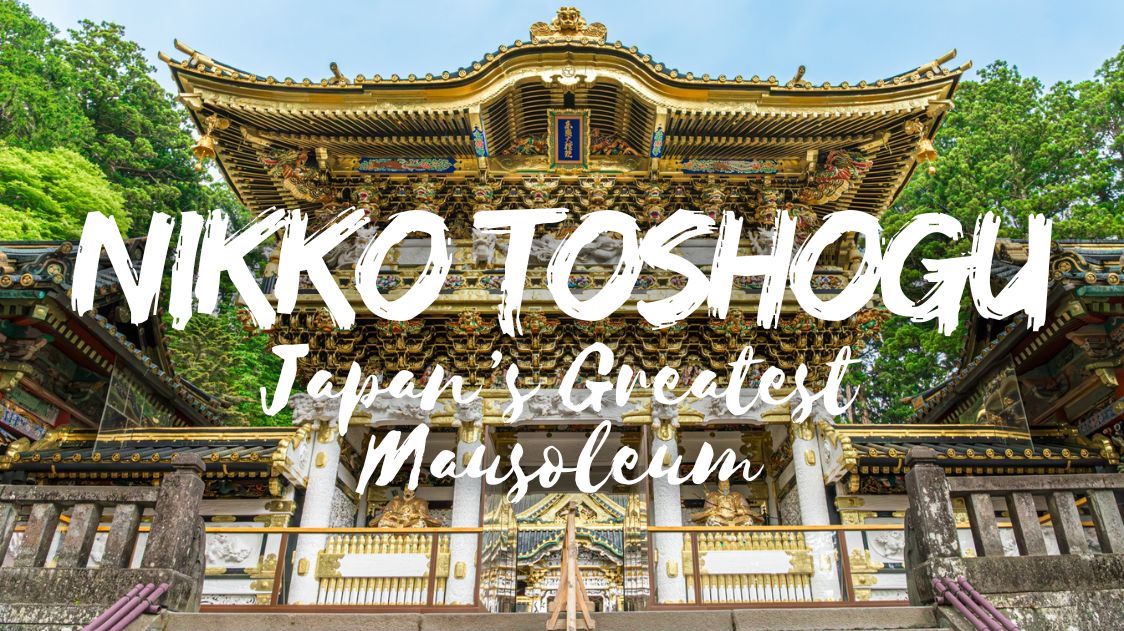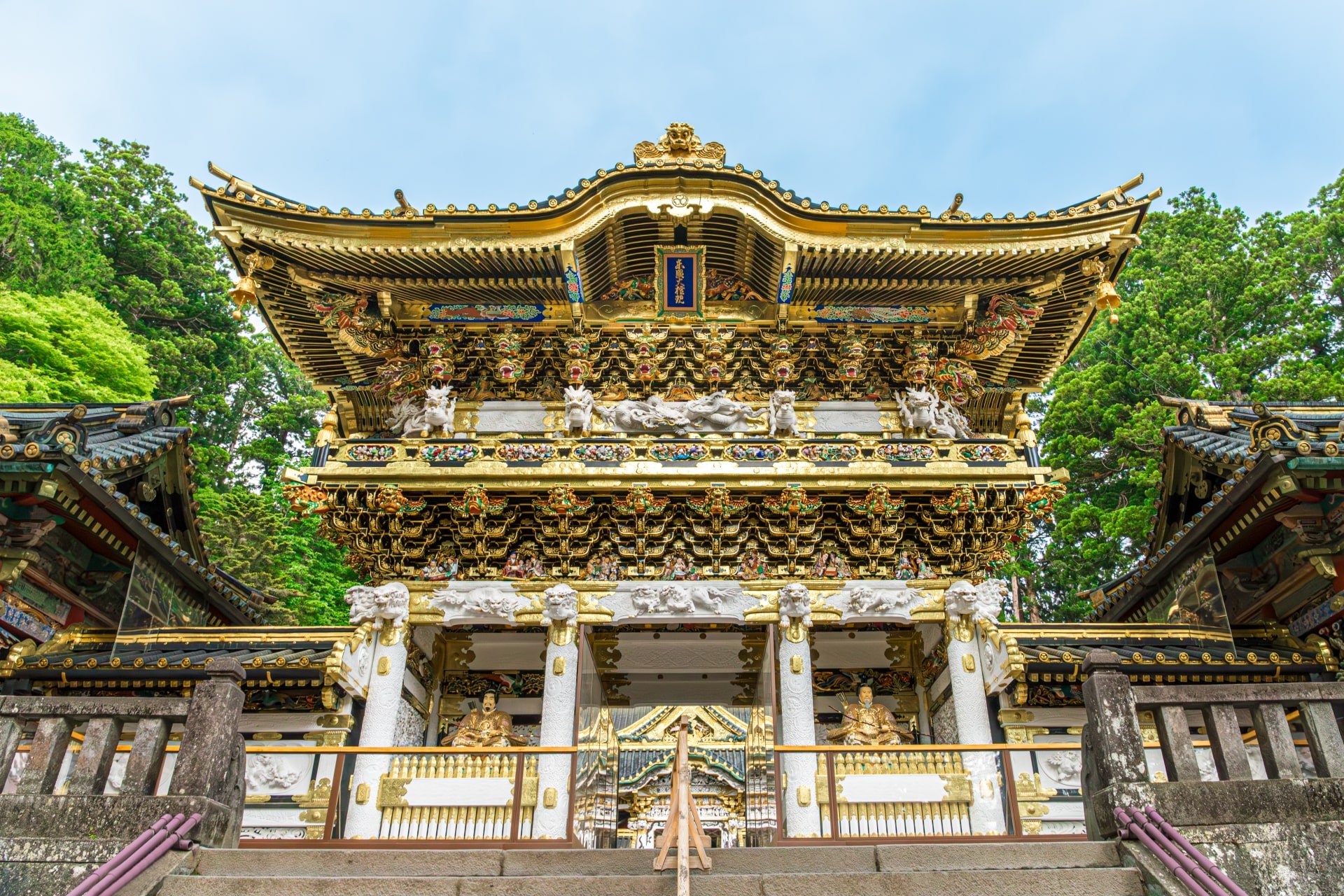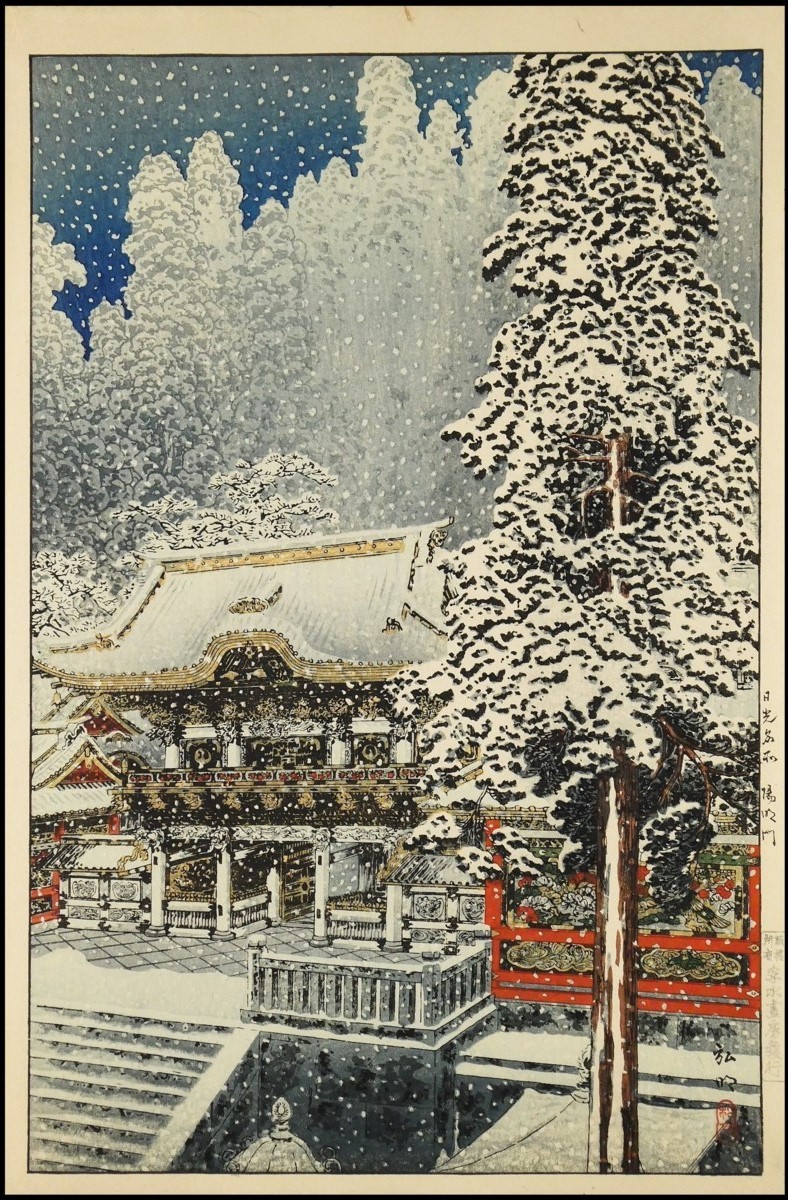Nikko Toshogu: Japan’s Greatest Mausoleum
Explore Nikko Toshogu Shrine

Nikko Toshogu Shrine, set in the verdant forests of Tochigi Prefecture, is a marvel of both Japanese architecture and spiritual history. As the final resting place of Tokugawa Ieyasu, the shogun who united Japan, it draws visitors from around the world for its intricate craftsmanship and deeply rooted significance in the Edo period.
Its vividly colored carvings, gold-leaf embellishments, and lush and peaceful surroundings, a visit to Nikko Toshogu feels like stepping into a different era altogether. And beyond its visual magnificence, the social and political context of its inception is a fascinating tale of power and devotion that ultimately played a key role in shaping Edo-era Japan. A historical role that offers a great depth to those willing to look beyond the surface.
See also: Nikko: Best Things to Do
What is Nikko Toshogu?

In 1999, it was designated as a UNESCO World Heritage Site, recognizing its historical and cultural significance and the outstanding preservation of its Edo-period craftsmanship.
Brief History of Nikko Toshogu

Nikko Toshogu was originally built in 1617 by Ieyasu’s son, Tokugawa Hidetada, as a relatively modest shrine to honor his father one year after his death. However, it was Ieyasu’s grandson, Tokugawa Iemitsu, who initiated the grand expansion of the shrine in 1636. Iemitsu’s renovations transformed Toshogu into an awe-inspiring complex, filled with ornate carvings, lavish decorations, and a display of wealth and power never seen before.
More than honoring his grandfather, the expansion was a strong political statement. By making Nikko Toshogu an unrivaled symbol of the Tokugawa family’s authority, Iemitsu solidified the clan’s dominance and reinforced the divine right of the Tokugawa Shogunate to rule Japan.

Nikko Toshogu quickly became one of the most important religious and political symbols of the Edo period. Annual ceremonies held at the shrine solidified the Tokugawa’s influence over the realm, as feudal lords from across Japan were expected to pay homage to Ieyasu, further cementing their loyalty to the Tokugawa regime.
A Surprising Historical Misconception
One of the most intriguing aspects of Nikko Toshogu is the historical misconception surrounding it. For centuries, many believed that Tokugawa Ieyasu’s remains were physically moved to Nikko after his death, making this shrine his final resting place. This belief was likely fueled by the immense opulence of Nikko Toshogu, which far overshadowed the more understated place where Ieyasu’s body was actually buried following his death.
In fact, Ieyasu’s true resting place is Kunozan Toshogu (久能山東照宮), a Shinto shrine located in Shizuoka Prefecture. After his death in 1616, at Sumpu Castle (駿府城), his retirement residence in Shizuoka, Ieyasu was buried at Kunozan, following his own request as specifically stated in his will. However, his spirit was later enshrined at Nikko. Ieyasu’s dying wish was to be enshrined at Kunozan as a deity, with his spirit enshrined in Nikko Toshogu Shrine a year later, marking the symbolic protection of Edo (modern-day Tokyo) from the northern mountains.
The misconception arose because of the symbolic bunrei ritual, in which Ieyasu’s spirit was divided and carried in a portable shrine to Nikko, allowing for his enshrinement in both Nikko and Kunozan, although his physical remains never left Kunozan.

But the grand expansion by Iemitsu, combined with the widespread reverence for Ieyasu, led many to assume that Nikko Toshogu must be his actual tomb, an assumption probably encouraged by the Tokugawa clan themselves, because of the Shogunate’s focus on promoting Nikko as the primary site of worship, making it a symbol of power for the regime.
This misconception persisted for centuries, but recent historical research has resurfaced the truth, giving a clearer understanding of the spiritual and political narratives that shaped this iconic shrine. Supporting evidence includes the annual ceremonies held at Kunozan Toshogu to commemorate Ieyasu’s death, which involve the Tokugawa family and high-ranking Shinto priests from the shrine. In contrast, no similar rituals are performed at Nikko Toshogu Shrine on Ieyasu’s death anniversary, highlighting that the Nikko shrine plays more of a symbolic role in commemorating the shogun.
By the way, Tokugawa Ieyasu is also enshrined at Ueno Toshogu Shrine in Tokyo, so if you’re the completionist type, you may as well pay a visit also!
What to See at Nikko Toshogu
Nikko Toshogu Shrine is a sprawling complex that offers visitors a variety of sights, each one filled with artistic, historical, and spiritual significance. The following are some of the key highlights that no visitor should miss:
The Five-Story Pagoda

The Sacred Stable and the Three Wise Monkeys
The Sacred Stable (神厩舎) is seemingly a humble structure that houses one of the most famous carvings in Japan: the Three Wise Monkeys (三猿), popularly known as Mizaru, Kikazaru, Iwazaru, who embody the Confucian principle “see no evil, hear no evil, speak no evil.” Its meaning is the subject of some debates, with the most common interpretation being either about the avoidance of evil or about willfully turning a blind eye to evil. Located on the side of the Sacred Stable, which houses the shrine’s sacred horses, the monkeys are carved in a series of eight panels that depict the life stages of a monkey, symbolizing the human condition.
Yomeimon Gate
With a name that can be translated as the “Gate of Sunlight,” Yomeimon (陽明門) is the most iconic structure within the Nikko Toshogu complex. This ornate gate is richly decorated with over 500 detailed carvings, including mythical beasts, flowers, and traditional motifs. It’s also often nicknamed as Higurashimon (日暮門) which could be translated as “All day Gate”, as Iemitsu himself stated that the gate’s beauty is so mesmerizing that one could gaze at it for hours, losing track of time.
The Sleeping Cat (Nemuri Neko)

Tokugawa Ieyasu’s Tomb

Honjido Hall (Crying Dragon)
Inside Honjido Hall (本地堂), also known as the Crying Dragon (鳴き龍), visitors can witness a unique acoustic phenomenon. The ceiling is decorated with a large dragon painting, and when two pieces of wood are clapped directly under its head, the sound echoes in a way that resembles the dragon’s cry, giving it the name Naki Ryu (Crying Dragon). The hall serves as a reminder of the mystical atmosphere that pervades the entire shrine.
Recommended extra: Rin’noji Taiyuin (Mausoleum of Iemitsu)

Built in 1653, this mausoleum shares a similar architectural style with Nikko Toshogu but maintains a more solemn and subdued atmosphere. The structures of Rin’nōji Taiyū-in are richly decorated, yet there is a deliberate attempt to give Iemitsu’s final resting place a quieter and more humble tone, reflecting his desire to show respect to his grandfather, Ieyasu. The mausoleum is integrated into the larger Rin’nōji temple complex, which serves as one of the most important Buddhist temples in the area.
Visitors to Rin’nōji Taiyū-in can explore several beautiful gates and halls, including the Nitenmon Gate and the Haiden (worship hall), both showcasing intricate wood carvings and vibrant colors. The mausoleum is surrounded by towering trees, adding to its more contemplative setting, which is a nice contrast to the often-crowded Nikko Toshogu.
How to Get to Nikko Toshogu
The most convenient way to reach Nikko from Tokyo is by train. There are two main options:
- Tobu Railways: The Tobu Limited Express departs from Asakusa Station in Tokyo and arrives at Tobu-Nikko Station in approximately two hours. This is the most affordable and direct option, and Tobu also offers travel passes that include round-trip train tickets and unlimited bus rides within the Nikko area.
- Japan Rail (JR) Lines: For those holding a JR Rail Pass, you can take the JR Tohoku Shinkansen from Tokyo or Ueno to Utsunomiya Station (50 minutes), and then transfer to the JR Nikko Line, which takes around 45 minutes to reach JR Nikko Station
From both Tobu Nikko and JR Nikko stations, it’s a short bus ride (10-15 minutes) or a scenic 30-minute walk to Nikko Toshogu Shrine.
More info: How to Get to Nikko from Tokyo
Tourist Attractions Near Nikko Toshogu
Nikko is filled with historical and natural attractions that complement a visit to Nikko Toshogu. Here are some of the nearby spots that you can explore during your trip:
Nikkozan Rin’noji Temple Sanbutsudo

The temple was founded by the Buddhist priest Shodo Shonin in the 8th century and has been a central place of worship in the region ever since. The Sanbutsudo is currently undergoing renovation, but visitors can still enter the hall to view the statues and learn about the temple’s historical significance.
Shinkyo Bridge
Just a short walk from the Nikko Toshogu complex is Shinkyo Bridge (神橋), one of Japan’s most iconic bridges and a UNESCO World Heritage Site. The vivid red bridge spans the Daiya River and serves as the symbolic entrance to Nikko’s sacred areas. It was traditionally reserved for imperial messengers and is said to have been built in honor of Shodo Shonin, who crossed the river on the back of two serpents, according to legend. Today, visitors can cross the bridge for a small fee, or enjoy its beauty from the main road.
 Access Access |
In front of the Wold Heritage Complex entrance |
|---|---|
 Official Website Official Website |
http://www.shinkyo.net/ |
Nikko Tamozawa Imperial Villa Memorial Park

Nikko Tamozawa Imperial Villa Memorial Park (日光田母沢御用邸記念公園) is a beautifully preserved imperial residence that dates back to the late Edo and Meiji periods. Originally built as a retreat for the Tokugawa clan and later expanded by Emperor Taisho, the villa seamlessly blends Edo, Meiji, and modern architectural styles. Visitors can tour the villa’s elegant rooms, expansive gardens, and learn about its history as a residence for Japan’s imperial family. The park offers a peaceful respite from the bustling temple areas and a chance to step into Japan’s imperial past.
 Access Access |
15-min walk from Nikko Toshogu |
|---|---|
 Official Website Official Website |
http://www.park-tochigi.com/tamozawa/ |
Kanmangafuchi Abyss

It is said that the statues mysteriously change in number, with visitors unable to count the same number twice. The area also offers peaceful riverside walks and a unique atmosphere of serenity.
 Access Access |
22-min walk from Nikko Toshogu |
|---|---|
 Official Website Official Website |
http://www.nikko-kankou.org/spot/25/ |
Akechidaira Ropeway

It’s especially popular in autumn when the landscape is painted with vibrant fall foliage. The ropeway station is conveniently located along the road to Lake Chuzenji, making it a great stop on the way to other attractions.
 Access Access |
38-min bus from Nikko Toshogu |
|---|---|
 Official Website Official Website |
https://www.nikko-kotsu.co.jp/ropeway/ |
Kegon Falls

There is an observation platform at the top of the falls, and for a closer view, visitors can take an elevator down to the base. Kegon Waterfalls is a must-see for nature lovers and photographers, offering a stunning natural contrast to the historical and cultural sites of Nikko.
For more information about landmarks and traveling in Japan, check these articles below, too!
Written by
Photographer, journalist, and avid urban cyclist, making sense of Japan since 2017. I was born in Caracas and lived for 14 years in Barcelona before moving to Tokyo. Currently working towards my goal of visiting every prefecture in Japan, I hope to share with readers the everlasting joy of discovery and the neverending urge to keep exploring.















